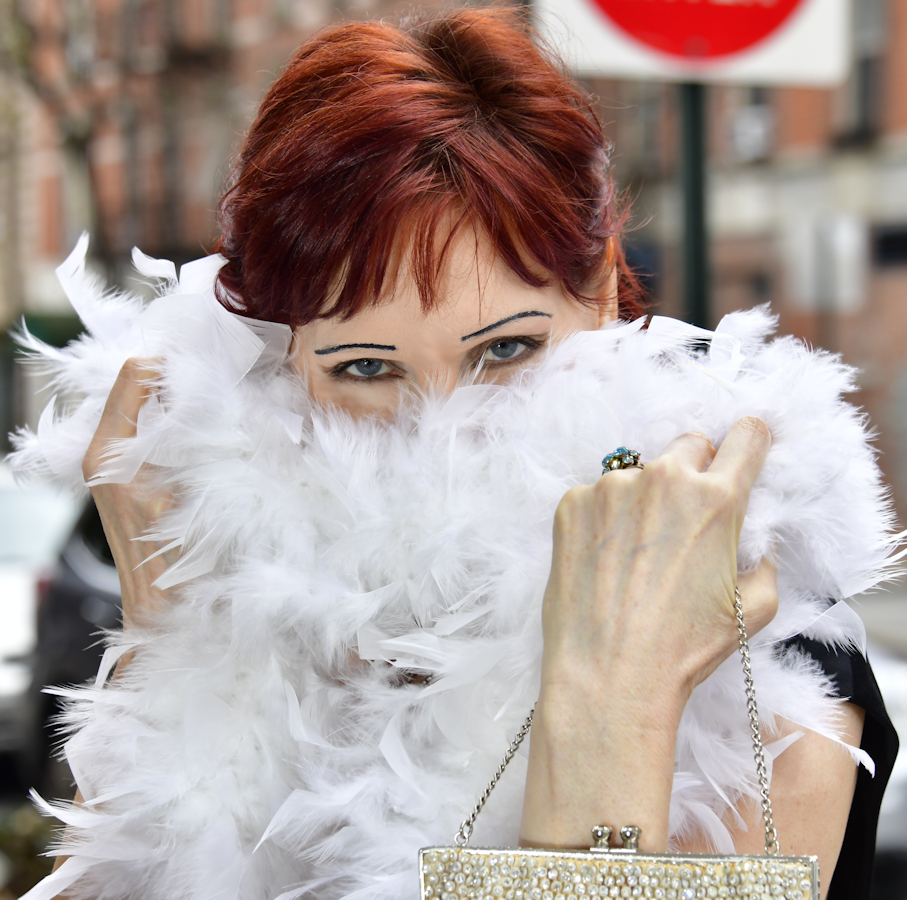
One hundred years ago, on April 28, 1925, the Paris Expo (known to Francophiles as the Exposition internationale des arts décoratifs et industriels moderne) launched the worldwide Art Deco movement, transforming fashion, jewelry, architecture, and much more.
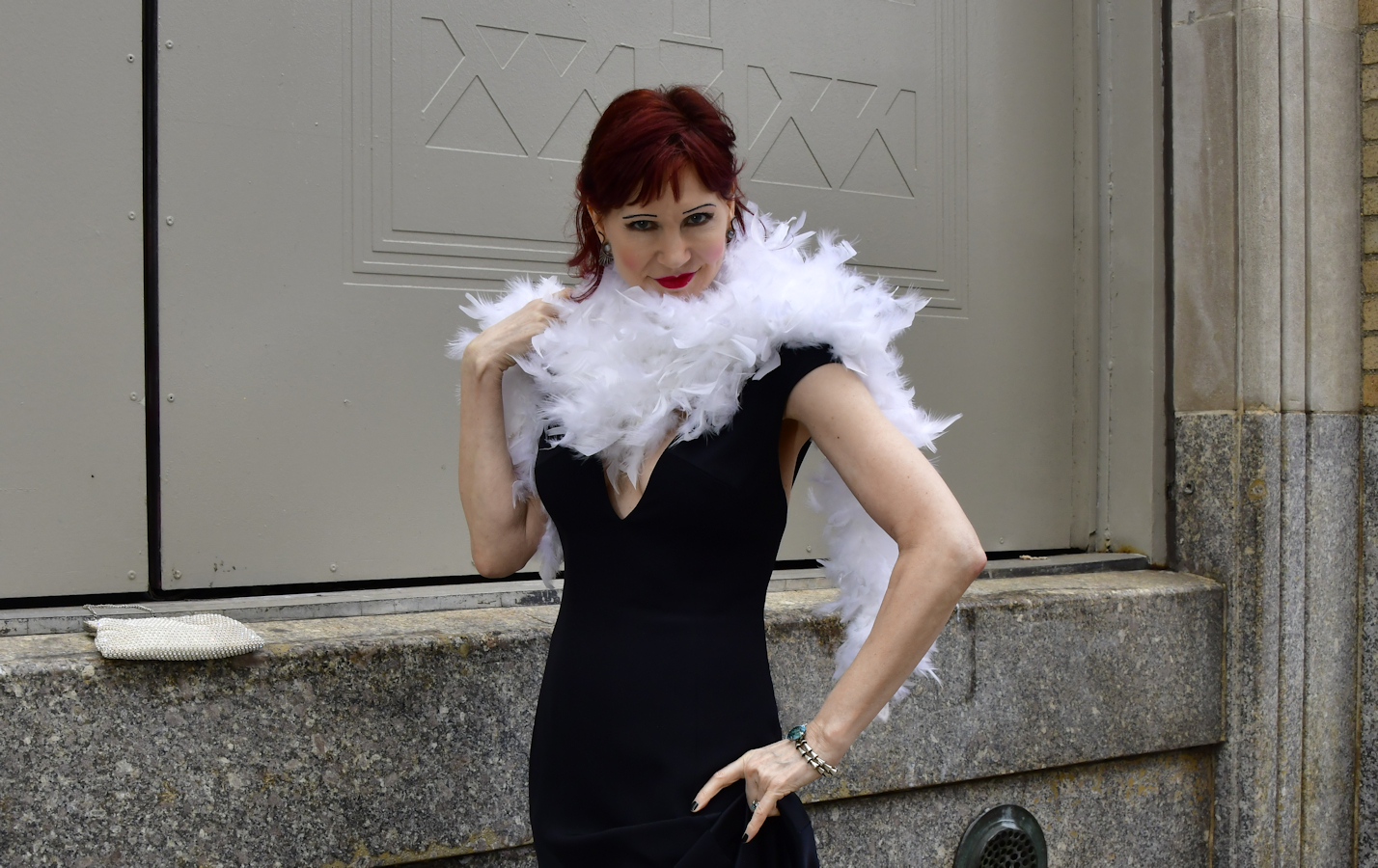
New York caught the fever, perhaps more than any other city. Evidence remains to this day in the glorious architecture of buildings erected during the Great Depression—in the late 1920s and throughout the 1930s—before giving sway to the International style of architecture that arose concurrently.
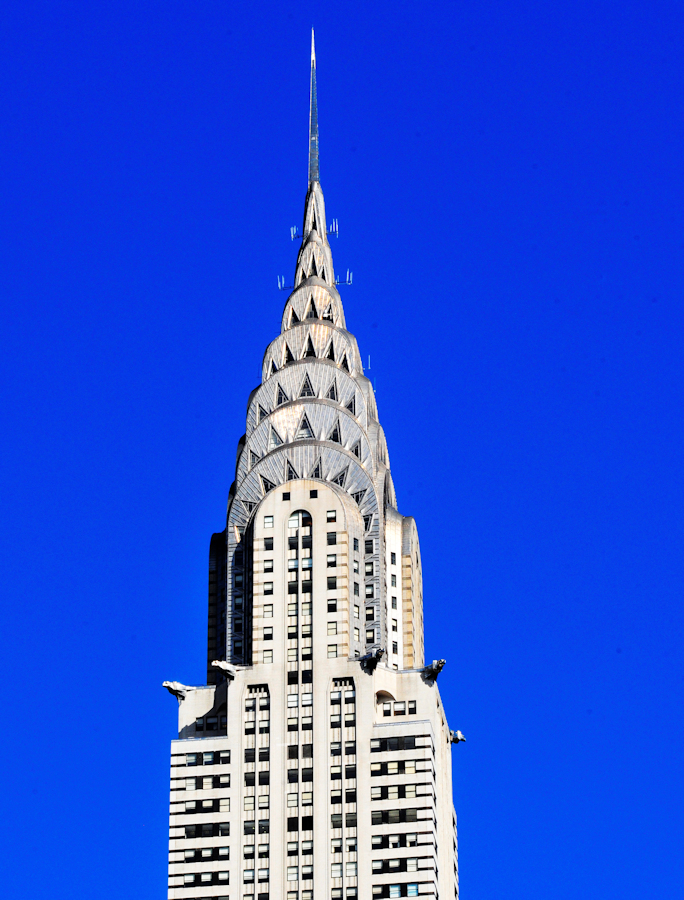
To celebrate this centennial, the Art Deco Society of New York has been hosting spectacular events all month, for both members and the public alike.
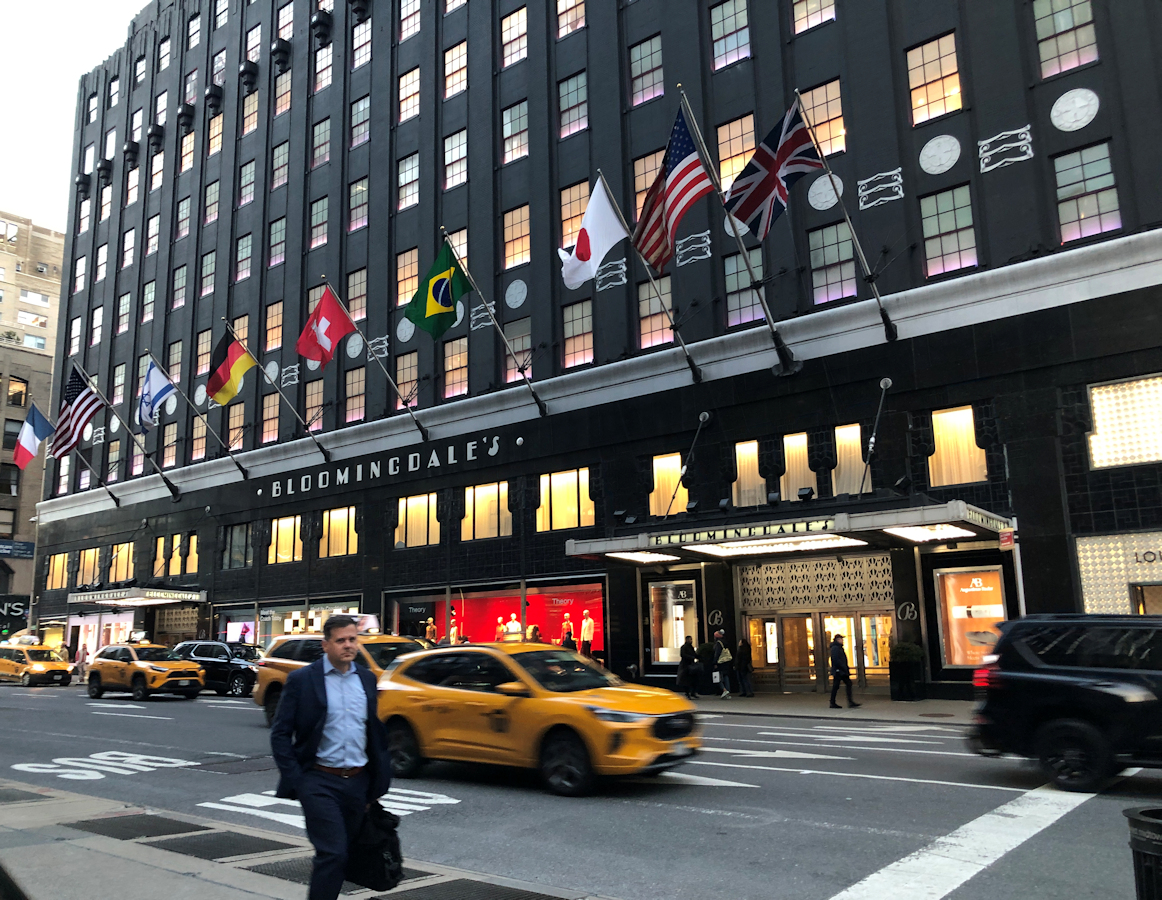
It’s not too late (it’s never too late) to get your Art Deco on. Although the Art Deco Society’s “Springtime in New York Art Deco Centennial Weekend” 4-day event is sold out, you can visit Art Deco gems and jazz-age hotspots every day of the year. Perhaps while imbibing a Mimosa at your favorite brunch spot. (This Art Deco cocktail of the month is said to have been created by a bartender at the Ritz Hotel in Paris in 1925.)
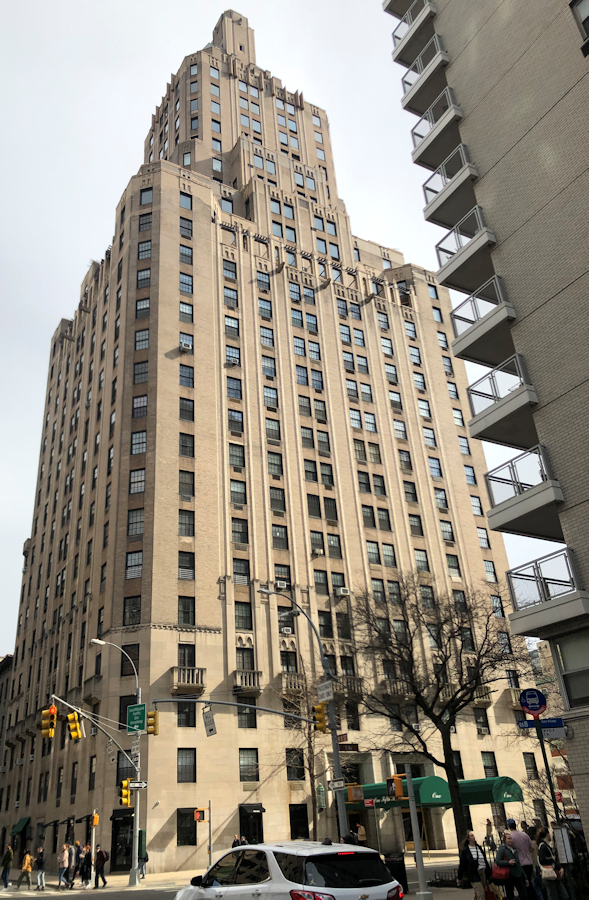
If more glamorous cocktails are what you’re after, you might like to visit Bemelmans Bar in the Carlyle Hotel, known for its distinctive Art Deco decor, with lovingly restored chocolate-brown leather banquettes, nickel-trimmed black glass tabletops, black granite bar, and 24-karat gold leaf-covered ceiling. And, of course, view the murals painted by Ludwig Bemelmans, the creator of the classic Madeline children’s books. Instead of accepting payment for his work, Bemelmans received a year and a half of accommodations at the Carlyle for himself and his family!
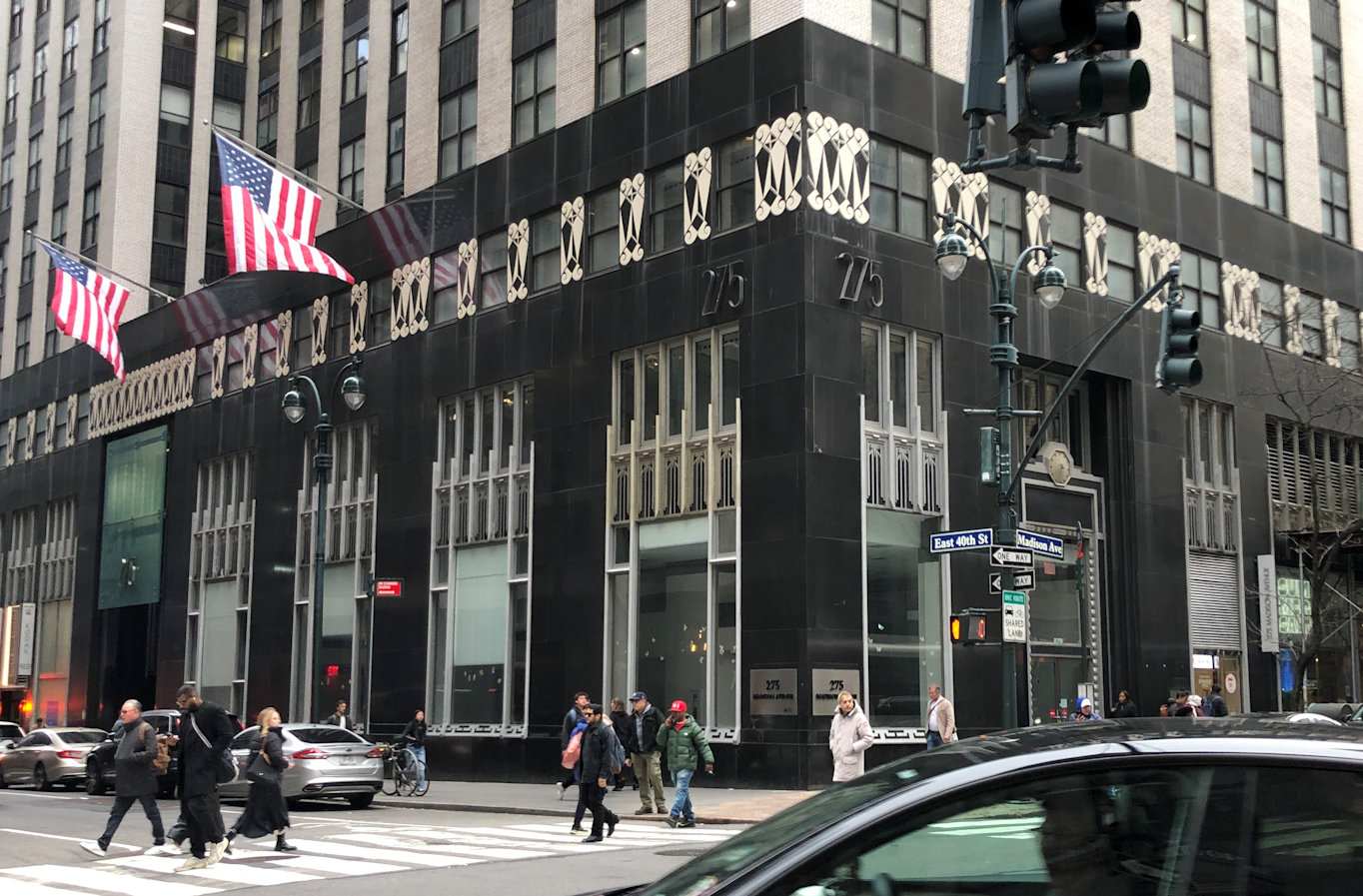
For an unforgettable cocktail experience, splash out at the Campbell Bar at Grand Central Terminal—the ornate, high-ceilinged offices of a 1920s mogul, the Jazz Age financier John W. Campbell. Afterwards, take a tipsy stroll two blocks south to the glorious 43-story building at 275 Madison Avenue. The New York City Landmarks Preservation Commission designated this striking skyscraper as an official landmark in 2009. It is considered a transitional work, bridging Art Deco and the International Style of architecture. But the abstract art ornamentation at street level is strictly Art Deco!
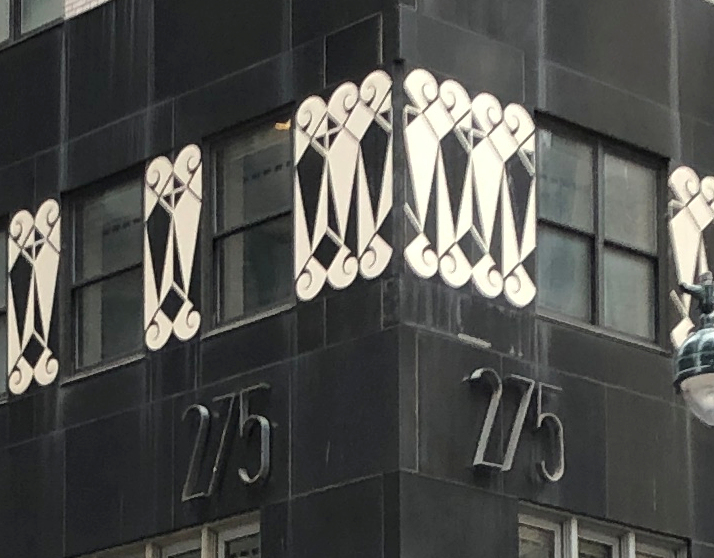
Visit the Art Deco Society of New York website to see what’s going on and learn more about Art Deco from their many splendid resources. And be sure to view their Art Deco Registry & Map. Use it to plan a 20-minute amble around your neighborhood, imbibing the intoxicating details of Art Deco. Don’t forget to look upwards! This is often where striking Art Deco embellishments await to astound and reward the alert observer. I swear you will fall in love with New York all over again.
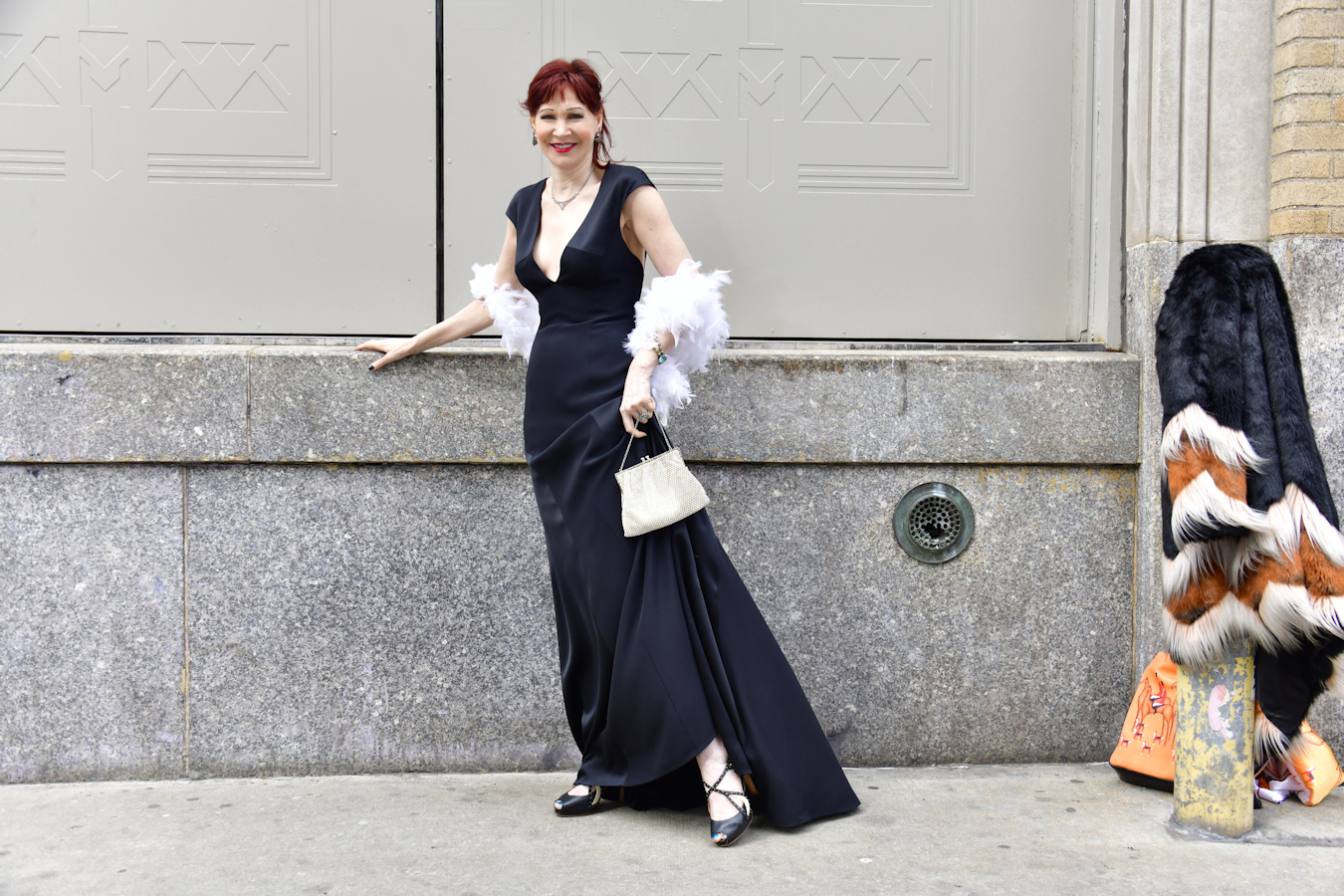
I wanted to join the fun and scouted a number of iconic Art Deco landmarks before selecting one that might surprise you: The City of New York Greenwich Substation 235, at the corner of Greenwich Avenue and West 13th Street. You may have seen these magnificent structures and wondered what they are and what they do. Me too!
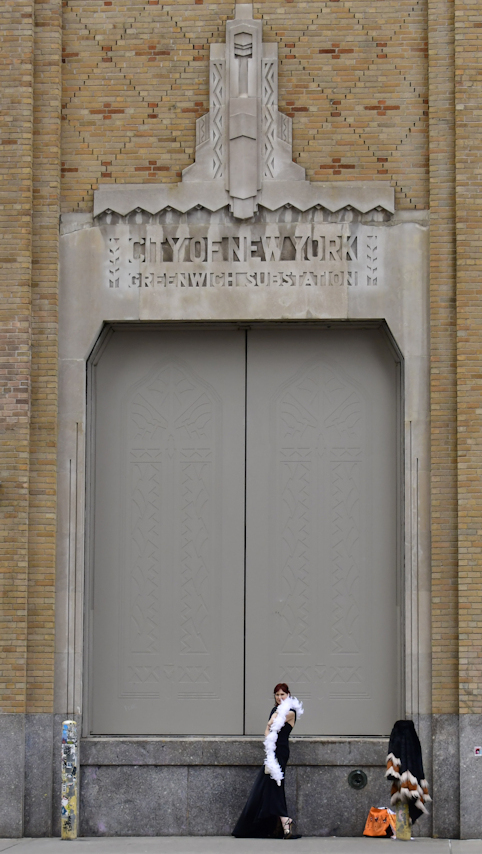
I have often walked by Substation 235 and been mystified. Did aliens from another time embed bas-relief Art Deco details into the giant aluminum doors? No, it was the Independent Subway System! The company built dozens of these substations to power the Eight Avenue subway line (now the A, C, and E trains), which was built from 1932 to 1940.
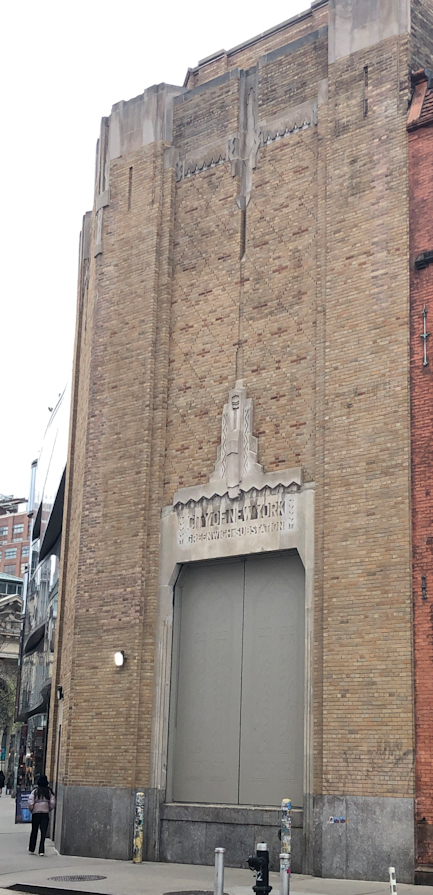
The substations convert high voltage alternating current (AC) power to lower voltage direct current (DC) to power the subway’s electric rails. But they informed function with style, cladding the substations with limestone, chevron-patterned brick, and geometric designs. Harlem’s sister Substation 219 is on the National Register of Historic Places.
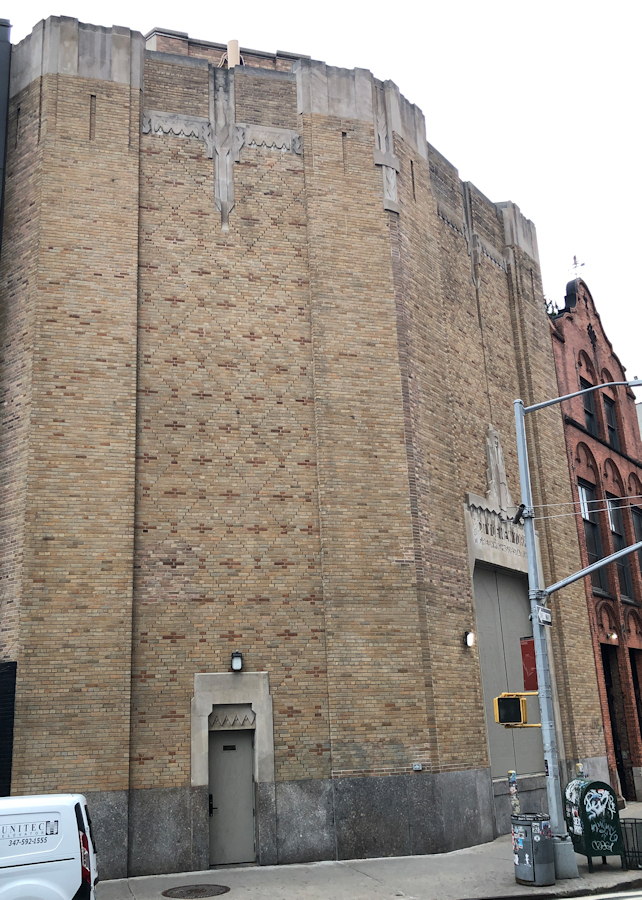
I strolled through my neighborhood one sunny morning to view Substation 235 and other Art Deco highlights and felt uplifted by the glory that’s been hiding in plain sight.
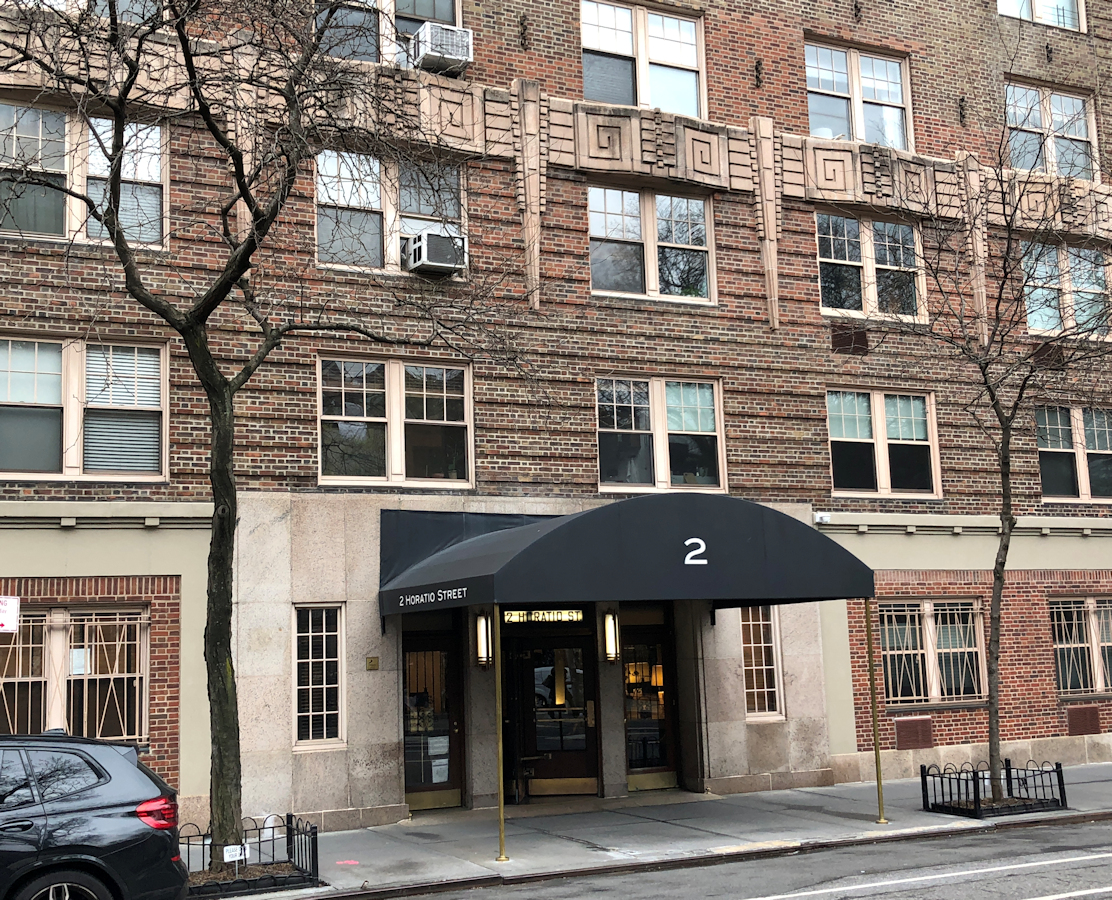
It’s easy to go down a rabbit hole into Wonderland once you start looking at the beauty of Art Deco architecture in NYC. If you enjoy the feeling of horizons expanding, you might wish to continue the celebration and preservation of New York’s Art Deco treasures by joining the Art Deco Society, your entrée to a continued immersion in this rich history.
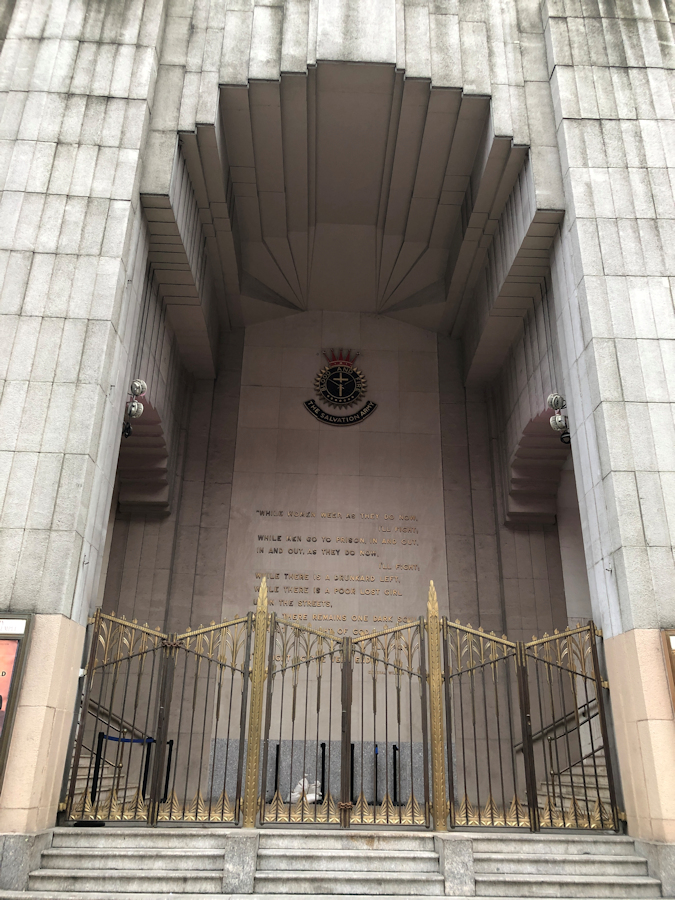
Favorite Art Deco Book

Isn’t the cover and premise of The Technique of the Love Affair fascinating? In 1928, this practical guide to becoming a ruthless femme fatale was too scandalous for its renowned fashion historian author, Doris Langley Moore, to attach her name. Dorothy Parker quipped in her review, “The Technique of the Love Affair makes, I am bitterly afraid, considerable sense. If only it had been placed in my hands years ago, maybe I could have been successful instead of just successive.” (The New Yorker, 1928.) Sigh.
An abridged version of this article first appeared in Chelsea News and other papers in the Straus News group.
Style Notes
I simply adore this gown by Andrea T New York. It perfectly captures the elegance of 1920s fashion. The exquisite natural silk jersey and silk satin fabrics drape gorgeously to reveal the Art Deco geometric panels in her design. Many thanks also to Gabija Guzauskaite for her easy 1920s makeup tutorial.
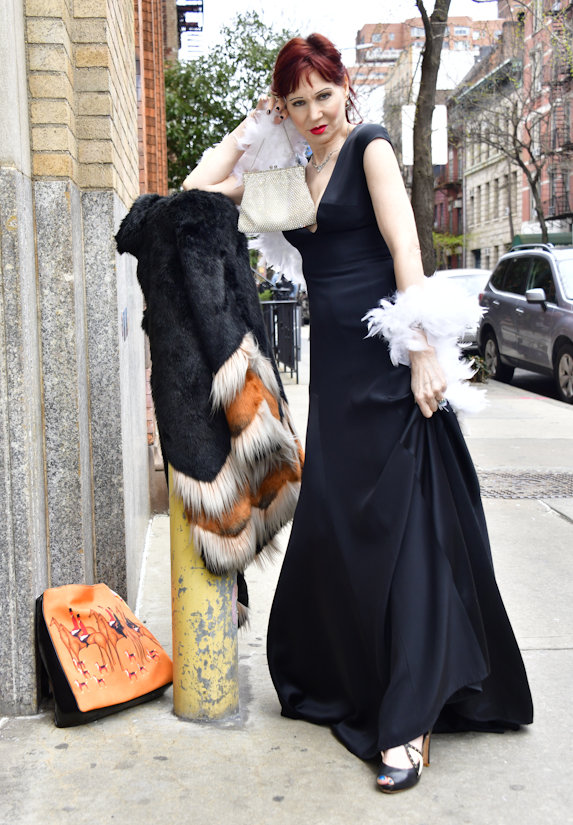
- Elegant, slinky black gown with Art Deco-reminiscent geometric panels, in silk jersey with silk satin bodice. Andrea T New York. 147 W. 35th St. (by appointment only).
- White feather boa. Party City, 38 W. 14th St. (Now closed.)
- Geometrically-cut black leather sandals with white half moon details by Parisian designer Maloles. Beacon’s Closet, 10 W. 13 St.
- Mademoiselle Mirabelle faux fur coat, 330 Bleecker St. (Now closed, but visit Mirabelle Boutique, 1339 Madison Avenue.)
- Art Deco silver and aquamarine bracelet and glorious moonstone and silver fan earrings. Pippin Vintage, 104 W. 17th St.
- Charming Johnathan Hallgrey “Christmas Hunt” tote and matching scarf. Via Instagram.
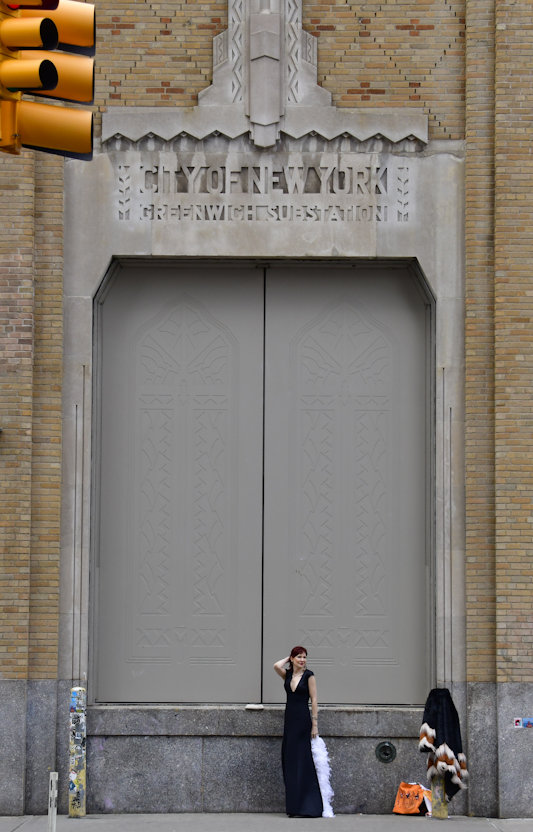

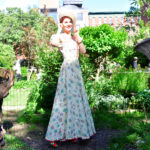
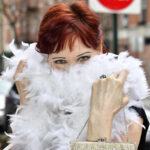
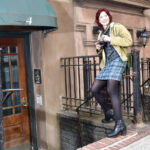
Hello Karen! Belated Happy Easter greetings. Ahh… Art Deco … what a unique and timeless art form. To my mind, stunning is an understatement. It has an elegance and sophistication like no other style. Much like yourself. Wonderful of you to share with us so many of the superb examples that must be found in a classic city like New York. And of course we here in Vancouver B.C. are privileged to have a famous example with the Marine Building. Thanks again, as always, for sharing your experiences with us while exploring in the Big Apple
greetings. Ahh… Art Deco … what a unique and timeless art form. To my mind, stunning is an understatement. It has an elegance and sophistication like no other style. Much like yourself. Wonderful of you to share with us so many of the superb examples that must be found in a classic city like New York. And of course we here in Vancouver B.C. are privileged to have a famous example with the Marine Building. Thanks again, as always, for sharing your experiences with us while exploring in the Big Apple  .
.
Dear Bruce, Thanks for telling me about the Marine Building (at 355 Burrard Street, Vancouver). I walked by it so many times without realizing its significance. For interested readers, a summary from Wikipedia:
Completed in 1930, at the time of its opening it was the city’s tallest skyscraper and it is listed among the best Art Deco buildings in the world. It owes its name to the plethora of fine marine-themed ornaments that decorate it. Because of its architecture and interior decorations, the building has been chosen as the setting of a number of film and television productions. https://en.wikipedia.org/wiki/Marine_Building
It’s just stunning! And that’s an understatement, as you said. Thanks, Bruce!
I love the art deco in NY–and now, it is so interesting to learn about the art deco of the substations–pllaces I pass all the time but have never fully taken in! Thanks for directing our attention. I always learn so many things from your great histories of NYC.
Thanks, Pat! It always pleases me when I can share something new with seasoned New Yorkers!
And this edition of KQS is simply too grand! You’ve done it again, Karen – combined your fabulous fashion sense with sensibility for our NYC heritage. It was really the Art Deco aesthetic that put New York on the map in the early days of the twentieth century. It also helped lift spirits during the Great Depression: think of all those glorious movies usually set amid the glamour of New York City. Thank you for bringing it back to center stage during the Art Deco Centennial!!
Dear Mrs. Reno, Thank you for these additional insights into Art Deco in New York, and for all your help as I was preparing the column. I love those old movies! Now it makes sense that they were an antidote to the Great Depression. I wonder what kind of movies we will get during the next four years!